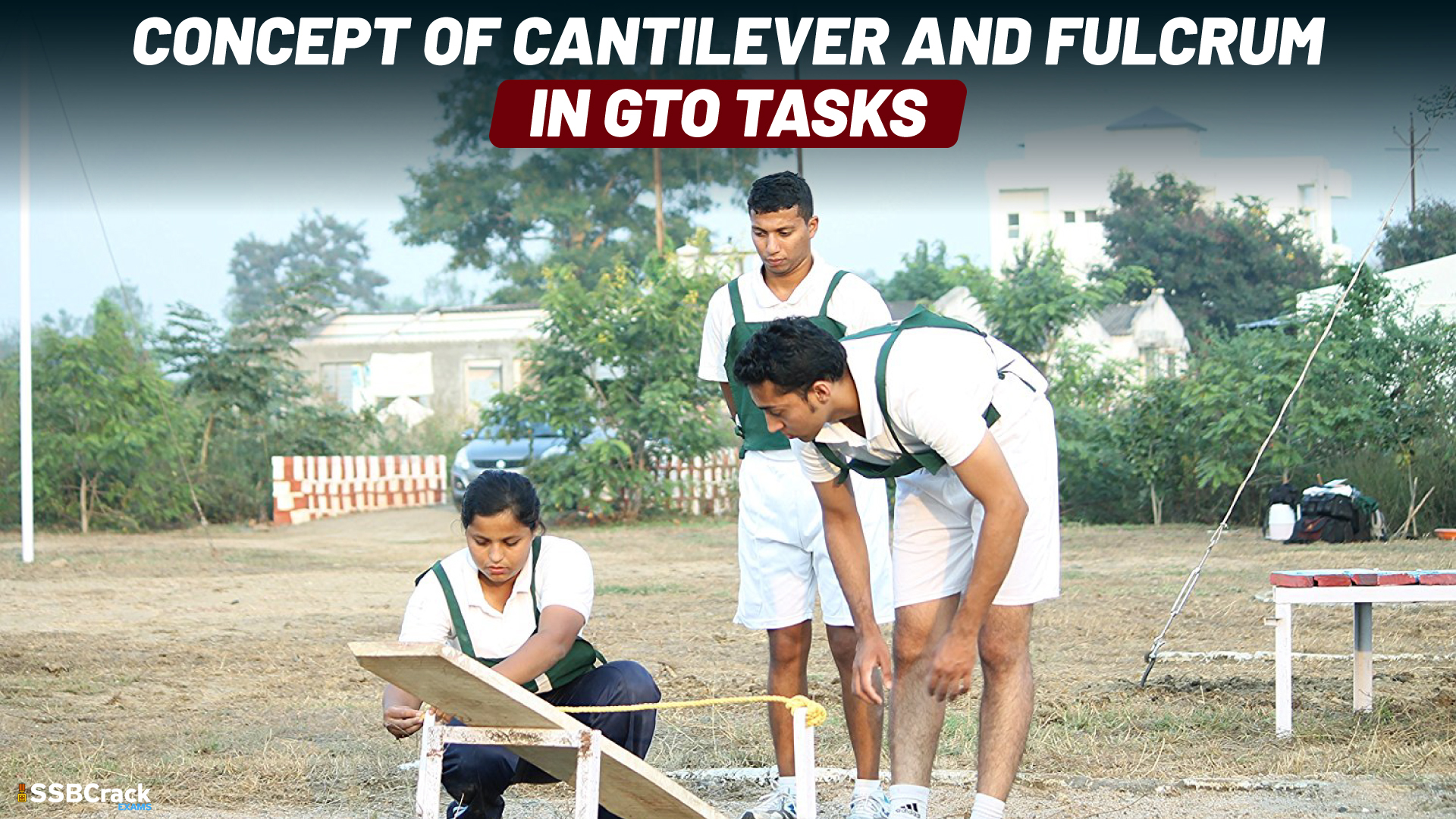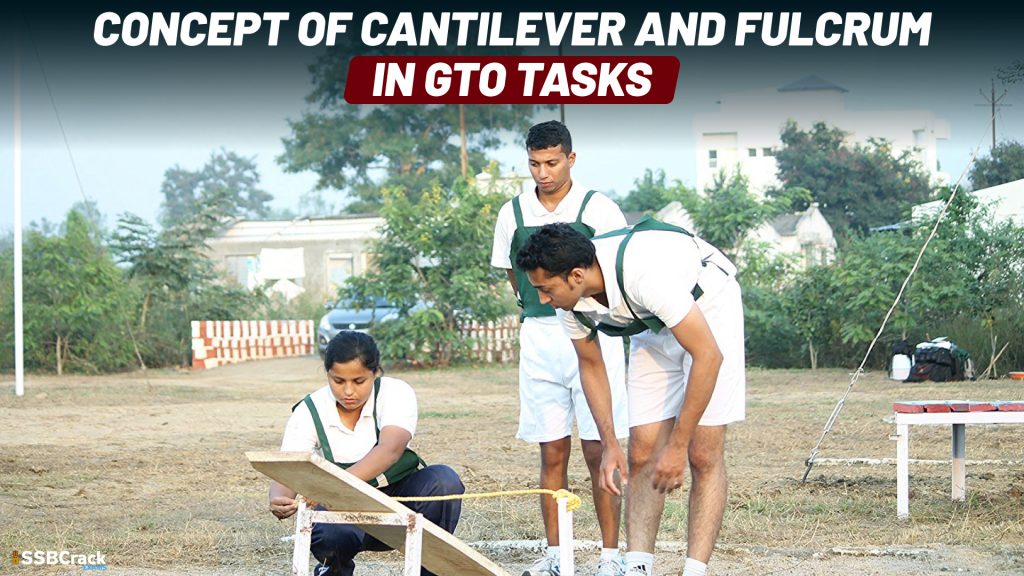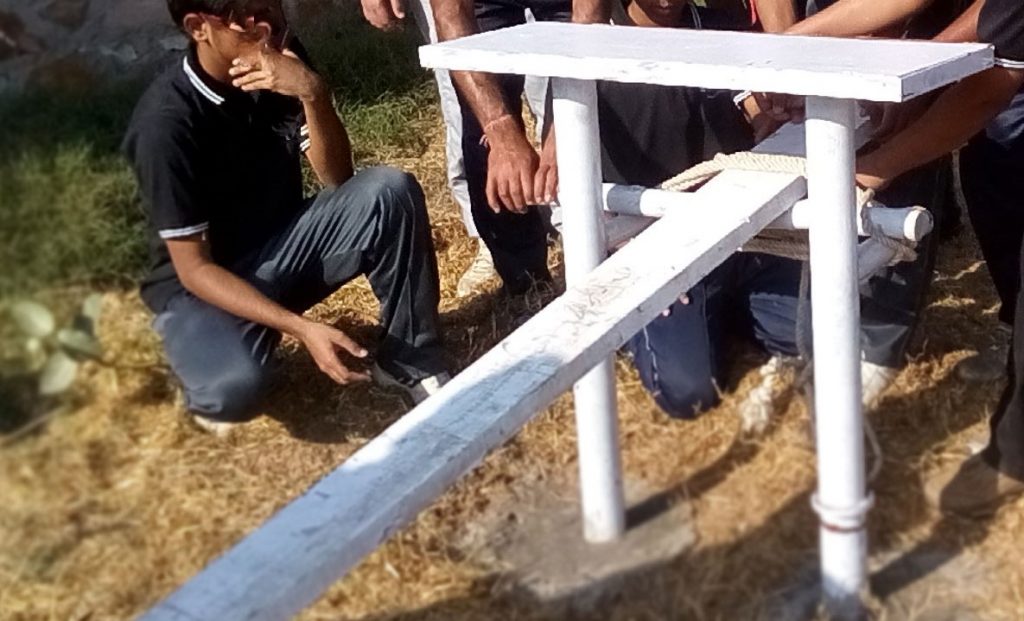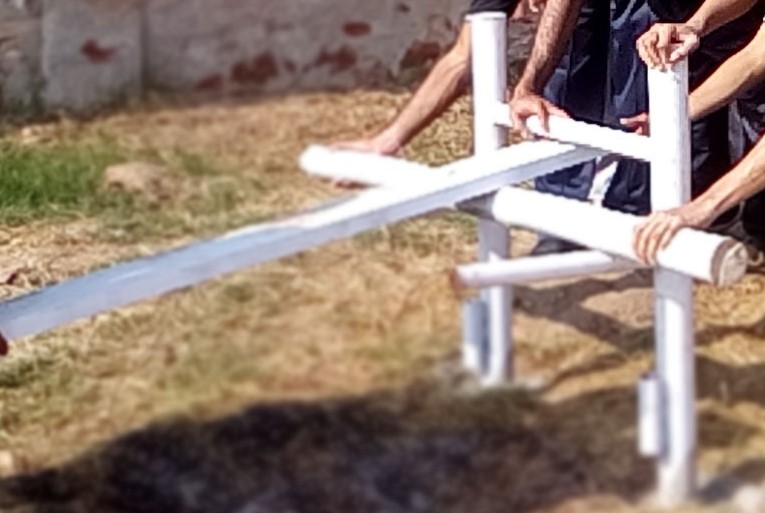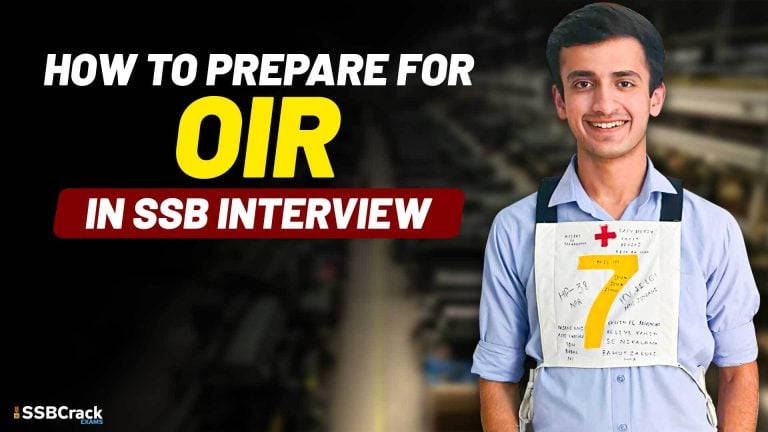The GTO is a set of outdoor tasks meant to evaluate a candidate’s abilities in a group setting and how they interact with one another. On Days 3 and 4 of the SSB, the GTO (Group Testing Officer) test series is administered (In AFSB, GTO test series are conducted on Day 2 & 3 or Day 3 & 4). The group testing officer evaluates each member of the group based on how they performed on the numerous tests, how they planned and established goals for each exam, and how they did so while keeping the group’s interests in mind.
In the SSB interview, group tasks are conducted under the supervision of a Group Testing Officer (GTO). There are PGT, HGT, CT, and FGT group tasks that require assistance. These are about a set of obstacles on the ground in a specific area that all team members must cross according to a set of rules.
The G.T.O. provides assistance in crossing those obstacles in the form of log(s), plank(s), and rope (s). In the PGT, the difficulty of the task progresses from one obstacle to the next, whereas it is only one obstacle in all other tasks. Essentially, you must bridge your way through these obstacles in order to reach the finish line with your group.
Here are a few terms associated with these tasks:
- Materials and the area between the start and finish lines are obstacles.
- Structures: A built material that may be required to bridge an obstacle. They are white, blue, and red in color. White is reserved for men and material, blue for men only, and red for none.
- Helping Material: Materials required to overcome obstacles and reach the finish line.
- Group: Candidates form a group to help you cross the obstacle.
- Load: Material that is your liability and must be carried with you while crossing the obstacle.
Two Methods for Bridging a Gap in an Obstacle
There are two methods for connecting two structures in an obstacle: direct and indirect. You make a bridge by placing one end of the log/plank on one structure and the other end on the other. The principle of cantilevers must be used in indirect bridging.
A universal trick for constructing a bridge over an obstacle:
The ‘Cantilever’ principle is the sole principle in bridging the gap. Let us now go over some Civil Engineering concepts. A cantilever is defined as a “long projecting beam or girder that is fixed at only one end.” A cantilever requires three components: fulcrum, effort, and load. You will be the load crossing the bridge. The only catch in using this in SSB is that you must build a cantilever bridge to cross where direct bridging is not possible. This opens up three possibilities:
- Both Fulcrum and Effort are present.
- Fulcrum present, but no effort.
- Both the fulcrum and the effort are missing.
Solutions to the possibilities
- If both the fulcrum and the effort are present, simply fix one end of the log/plank in the fulcrum and support the other side of the effort.
- If only the fulcrum is present, use the supporting materials to generate the effort needed to support your bridge.
- If neither the fulcrum nor the effort is present, you must create both in order to build a bridge.
Conclusion
If direct bridging is not possible, any structure within an obstacle can be bridged using the cantilever principle.
To crack the SSB Interview, You can join our SSB interview live classes batch and we recommend you to Enroll SSB INTERVIEW ONLINE COURSE. Trusted by thousands of defence aspirants.
Also read:


